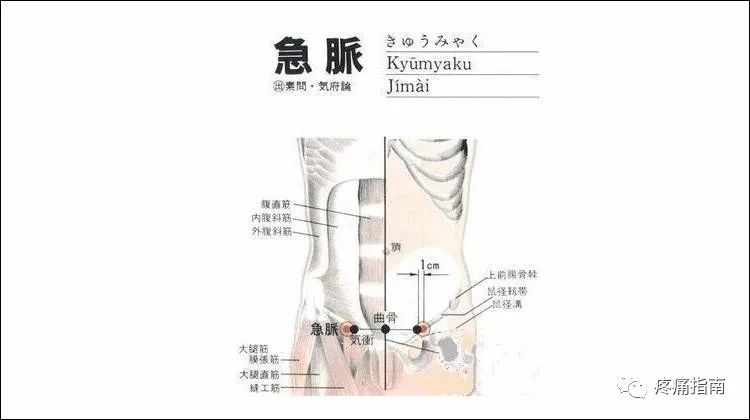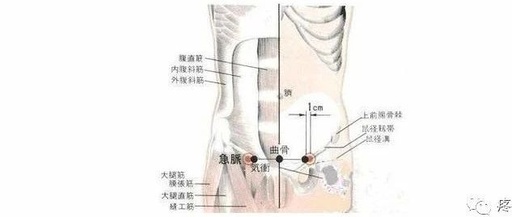Perineal pain, also known as yin bu shen jing tong zong he zheng (perineal neuralgia syndrome), is a type of recurrent and distressing pain in the testicular area with an unclear etiology. Symptoms often include lower abdominal heaviness, testicular pain, a feeling of heaviness, and pain in the penis and inner thigh. The pain is characterized as persistent, radiating, and needle-like, severely affecting the patient’s daily life and work.
This condition is often discovered in the diagnosis and treatment of urological diseases, but due to the similarity of symptoms with prostatitis, vas deferens- spermatic cord inflammation, or organic lesions in the scrotum, as well as scrotal pain caused by kidney stones, it is often confused and misdiagnosed. Acupuncture at the points zhong ji (中极), qu gu (曲骨), guan yuan (关元), da he (大赫), heng gu (横骨), and ji mai (急脉) can directly affect the ilioinguinal nerve and the genital branch of the femoral nerve, inhibiting nerve excitation, thereby achieving pain relief.

Since the aforementioned points correspond to the ren mai (任脉), zu shao yin shen (足少阴肾), and zu jue yin gan (足厥阴肝) meridians, which all traverse the perineal area, they are effective for treating perineal pain. Therefore, acupuncture at these points for treating perineal pain (perineal neuralgia) aligns with TCM theory, is feasible, and has definite efficacy.
Diagnostic Criteria
1. Lower abdominal heaviness.
2. Testicular pain and heaviness.
3. Pain in the penis and inner thigh.
4. Pain is radiating, persistent, and needle-like.
Indications
Male perineal neuralgia syndrome.
Contraindications
1. Individuals who are overly hungry or fatigued.
2. Those with spontaneous bleeding or persistent bleeding after injury.
3. Local skin infections, ulcers, or scars.
Technical Operation Method
1. Equipment Preparation
Use Huatuo brand No. 30, 2.0-2.5 inch stainless steel needles produced by Suzhou Medical Supplies Factory.
2. Detailed Operation Steps
1. Point Location:
Guan Yuan: 3 inches below the navel.
Zhong Ji: 4 inches below the navel.
Heng Gu: 5 inches below the navel, 0.5 inches lateral to the midline at the superior border of the pubic symphysis.
Qu Gu: At the midpoint of the superior border of the pubic symphysis.
Da He: 4 inches below the navel, 0.5 inches lateral to the midline.
Ji Mai: 2.5 inches lateral to the inferior border of the pubic symphysis, at the groin below the Qichong point.
2. Operation Method: ① The patient lies supine, and the acupuncture site is disinfected with 75% alcohol. ② The needle is inserted slowly at an angle of 85° to a depth of 1.8-2.3 inches, with the needle tip directed towards the testicles and penis. ③ Upon obtaining qi, the practitioner feels a sinking and dull sensation, while the patient experiences numbness and swelling at the needle site, with a radiating sensation towards the testicles and penis. ④ Acupuncture is performed once daily, with needles retained for 30 minutes.
During the retention period, no manipulation of the needles is allowed.
3. Treatment Course
A treatment course lasts for 20 days.
4. Key Technical Points
Accurate point selection, needle angle, and depth are crucial. When needling Qu Gu, Heng Gu, Da He, and Zhong Ji, a radiating sensation should be felt towards the testicles or penis; when needling Ji Mai, the sensation should radiate towards the testicles, penis, or inner thigh.
5. Precautions
1. Instruct the patient to urinate before needling to avoid bladder injury.
2. During needling, avoid lifting, thrusting, or twisting the needle.
3. When removing the needle, do so slowly and apply pressure for 2-3 minutes to prevent bleeding.
6. Possible Accidental Situations and Handling Plans
If bleeding occurs, apply pressure to stop it, and use cold compresses to promote coagulation. After 24 hours, apply warm compresses to promote the absorption of hematomas.
Your likes are our motivation for progress!↘↘↘

